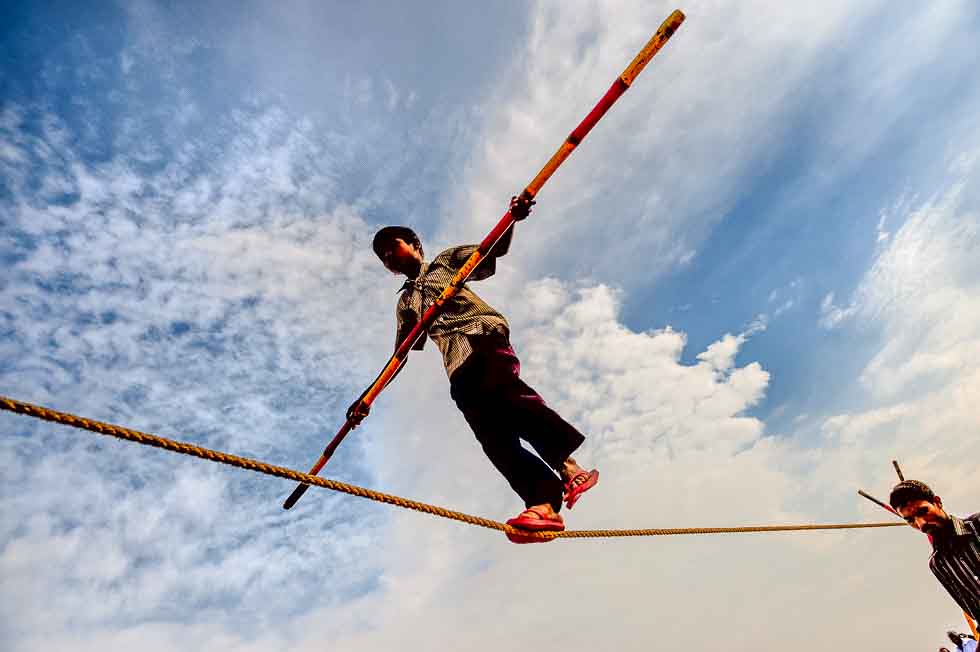One of the many sweeping behavioural changes caused by the COVID-19 pandemic has been the overnight shift to remote working for millions of teams around the world. Personally, I have always thought of remote working, or working from home, as a non-financial perk. It’s also a way of recruiting talent that needs flexibility, like working moms, for example.
Luckily, the organisations I work in are quite well-equipped for remote working. Despite this, I found myself—and our teams—struggling last week, and reached out to peers within the sector for advice and tips. Here is the gist of our conversations, focused on getting the most out of remote working, maintaining team spirits, and taking care of well-being.

There is nothing like a common mission to brings teams together. | Photo courtesy: Pixabay
Getting the most out of remote working
Many of our field-based organisations’ usual work just can’t be done from home. Some are taking this opportunity to take their products/services online, or offer unique content to their existing communities. Others are using this time for strategic retreats, to design new products/services, or to bring projects that have been on the back burner into focus. In all cases, the organisations have had to re-group on their short-term goals.

Make sure that each team and its members are able to pick their daily activities from the macro goals. While remote working, some organisations use tools such as Objectives and Key Results (OKRs), while others use simple Excel work plans.
Given that things are changing every day, your check-ins should focus on one week’s goals (or two, at the maximum). You could also do a 15-minute daily check-in to let team members share their priorities and where they need support from others.
Remote working only works if you can access documents digitally and have shared drives for teams. (If you have gone digital recently, be sure to also back up all the documents). Most organisations need tools to:
- Store and share documents (eg. Dropbox or Google Drive)
- Host team meetings and work sessions (eg. Zoom or Google Hangouts)
- Communicate with teams on a day-to-day basis (eg. WhatsApp, Slack, or e-mail)
- Manage projects (eg. Asana or Koan)
The key is to pick one or two tools, and implement them across the organisation. Multiple tools only add to the confusion and information overload.
If you have recently started using any of the tools mentioned above, make sure you run training sessions or share tips to support the team. Don’t assume that everyone in the team is equally tech-savvy or for that matter, has a computer at home. Lastly, agree on protocol for communication—for example, use Slack for queries that can wait, text to flag queries, and phone calls for urgent queries. Just because you are on Slack doesn’t imply that you can respond to all messages right away.

Related article: Five ways to manage teams while working remotely
Maintaining team spirits
Many tools, like Zoom, enable the use of virtual whiteboards or work within subgroups. Some organisations also use simple word or Excel documents to continue doing group work on a video call. This also engages team members who might otherwise find it difficult to be motivated to work on their own.
There is nothing like a common mission to bring teams together. For example, a team could take up a simple health challenge or do a yoga session together. Another team activity could be to mobilise resources for COVID-19-related initiatives.
Think virtual chai or coffee catch-ups, mid-week lunch screenings, or a games evening to close the week. Ask different team members to lead the social activity for the week and see what they come up with. My favourite examples include a team playing charades over Zoom, and another team holding a ‘best dressed person on Zoom’ competition every week.
Create a space where weekly, team members can connect with one person who can help keep them in touch with the big picture, and answer any of their queries. This can be particularly useful for new recruits or junior team members.
Taking care of well-being
Make sure you regularly check-in with team members to see how they are doing. Based on personality types, some might struggle more than others, but it is important to make sure that you check-in with everyone.
Give people as much leeway as they need, especially if they have children and/or parents to care for. Let team members know that it is okay to take a holiday, or breaks if they are feeling anxious or unwell. Make sure they know that you have their back through this challenging period.
People respond differently to crises. Some prefer not to talk about things, and some prefer to. What is important is to create spaces where people who want to engage can reach out. You could do this by inviting team members to create and lead subgroups for focused topics with others who are interested. You could also create a dedicated space at the beginning or the end of a day for personal check-ins.
It is important to give people enough support and leeway to adjust to the unprecedented times.
If you could only remember three things from this article, they should be that it is important to give people enough support and leeway to adjust to the unprecedented times. That virtual teams are a powerful way of providing community and coherence in an otherwise uncertain world. And lastly, that the principles of what makes ‘good work’ for any team must not change, just the manifestation of it does.
This article is based on insights from Gaurav Singh, Mary Ellen Matsui, Apurva Kothari, Sanaya Bharucha, Richard Alderson, Dominique Girardet, and JP Hamilton.
—
Know more
- Watch this explainer on how remote working teams can collaborate effectively.
- Read about how COVID-19 could lead to a permanent shift towards working from home.
- Explore the challenges that come with remote working, and how managers can better support their teams.
Do more
- Check out how we at IDR have been organising team activities, and reach out to us if you want to as well




